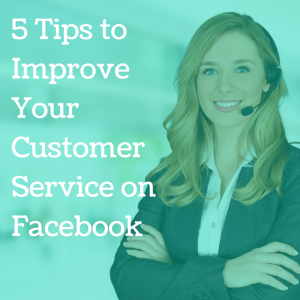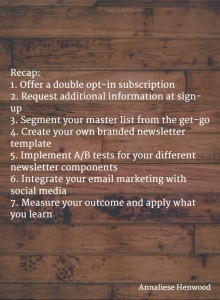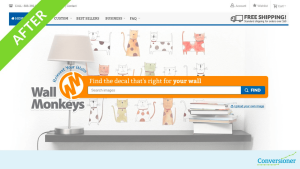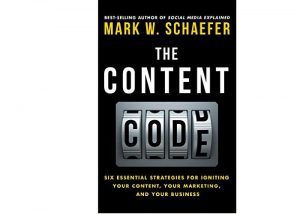Are you venturing into the realm of digital marketing and wondering where to start? The first step is to plan, build, and execute your strategy specifically geared towards digital. Websites, mobile apps, and social media networks are just some of the ways to interact with your audience and achieve your business goals. This post will guide you through the process of developing a successful strategy.
Planning your Strategy

The initial planning phase of developing your digital strategy begins with thinking through your business goals and conducting audience research. The information you come up with will be the foundation for your creative messaging and campaign development in the next stage.
First things first – set goals and expected outcomes. When building a digital marketing strategy, goals and expected outcomes are one of the first things to consider. You’ll pair goals with subsections of your audience to become targeted with your strategy. Different goals in digital also come with different types of measurement and analysis.
Goals can be highly specific or more broad, they may or may not directly impact your bottom line, and they may be short-term, middle-range, or long-term in engagement. Rarely will you have just one goal in building a strategy. Certain goals might be broad and long-term, such as building brand awareness or bringing consumer attention to an issue. Other goals might be specific, short-term, and will directly impact your bottom line, and your campaigns will reflect that. Middle-range engagements might involve developing a more lasting and rich relationship with your audience so that they eventually convert and become customers.
You can’t achieve your goals without your audience. Understanding your audience and what value they may have against your goals is key. Most companies and Organisations do not have just one single audience, so begin thinking through your current audiences, or segments. But who do you aspire to reach? Is there an audience or segment of the population you wish to reach but have not done so successfully? We’ll match your audience segments with certain goals to become more targeted with messaging in the creation phase. You may also want to start brainstorming what your message might be, how it will differ across audience segments, how you will deliver it, and what your tone and voice might be.
Conducting audience-specific research will give you better insights about customers – and your competitors.With audience segmentation comes research. Where does your audience spend time digitally? If you’re only looking at YouTube and Twitter, you need to expand your horizons. Learn what up-and-coming social networks are creating buzz, especially for your audience segments. Certain demographics like millennials may gravitate towards more visual networks like Snapchat and Instagram, while baby boomers frequently gravitate toward Facebook for reconnecting with long-time friends. This is a good opportunity to also see what your competitors have been doing digitally, and how well they have been doing it.
Creation – The Cornerstone of your Strategy

After working through your goals, audiences, and planning research, it’s time to get started on the creation phase. At this point you’ll dig deeper into messages, ideas, appropriate channels, and how to integrate these components into your strategy.
Get the melting pot together. The best brainstorming and creative idea development arises from a diverse mix of people in your organization. You’ll want to identify a point person or chair to run the meeting, ensure all participants are up-to-date on matters, and send out summaries from the brainstorming session. All ideas should be written down, and then as a group you can evaluate the pros and cons and run some initial cost-benefit analysis.
Evaluate potential audience engagement when you’re reviewing an idea. Fiscal feasibility is key to using an idea in a digital strategy, but it also needs to engage the audience. Maslow’s hierarchy of needs can be a useful framework for evaluating your idea’s potential engagement. Does your idea meet the audience’s basic needs, such as those that are physiological, safety-oriented, or social, or do they meet what Maslow calls growth needs – esteem and self-actualisation? Your idea must meet the needs of your audience to be a viable component of your strategy.
Understand how a potential customer might get from barely knowing your brand to converting. An audience’s interaction with a digital strategy begins with awareness of your brand. From there, they might want to dip their toes in the water – reading through some more pages on your website, for example. This evaluation could eventually lead to use of some campaign tools. From there, an audience reaches the conversion stage – perhaps making a purchase through your website. Engagement is actually the final step in the path, and ideas that reach this stage can create repeat customers and advocates for your brand.
Your audience may be at different junctures in the engagement path depending on the channel. Recognise that not all social networks or digital channels attract the same audience. Your website or blog may attract an audience who is readily and actively engaged, while a guest post or Facebook page may yield awareness. If a segment of your audience has reached the engagement phase, you may see user-generated content produced by the audience. This can help perpetuate your campaign once it’s up and running to reach your audience’s peers and attract new customers altogether.
Money still matters when it comes to selecting ideas and using channels. A digital strategy must include key performance indicators (KPIs). These metrics can be viewed against return on investment (ROI) and performance for measurement. KPIs can include things like page views, pages viewed, total purchases, and so on. You must also factor in the time that it will take to build and maintain digital channels for establishing value and worth.
Strategy Actualization and Implementation

At this point, you’ll incorporate your research from the planning phase and the ideas selected from the creation phase to move forward with actualization, or implementation. This is where an idea becomes a message.
Create your engagement timeline. Each channel has its own type of message. Build out your calendar for key topics, seasonality, and more. It doesn’t need to be rigid, but it should be a framework for keeping your channels maintained and updated with regularly, and the messaging should reflect your goals, values, and expected outcomes. Keep track of audience activity.
Plan your message and deliver it. What goal are you trying to achieve with this message, and to whom is the message targeted? This will help you clarify the right message for the right medium. When you go to deliver it, remember that there are usually multiple channels, not just a single one. These are not just tweets, texts, or updates – they are representations of your brand. You want the audience to do something, so make sure that your message includes something with which the audience can engage.
Monitor constantly. As you implement your strategy and deliver your message, be sure to monitor and tweak as needed. You may find that some messages perform better than others. Be sure to allow for some flexibility and on-the-go changes. Monitoring should also help you identify opportunities for proactive changes.
Engage with your audience. We talk at length about how to get an audience to engage with your brand, but you also need to engage – either with your audience as a whole or with an individual. Personalisation can build long-term brand loyalty and advocacy.
Report and review. Reporting helps you take what you have monitored and understand whether your messages are getting across to the right audience. You can make it as simple as the following:
- What is the message?
- What was our goal?
- What engagements or actions occurred as a result of this message?
- What were previous engagements or actions like prior to this message?
- Lessons learned between the two.
Reviewing these reports will help you share lessons learned with your team and work to improve messaging moving forward. At this point, you may challenge the next proposed message in your engagement timeline to determine whether it will be effective or not.
Ideally you’ll want to keep you reports brief, daily, and considered in the light of the previous record so that you can make constant improvements and collect relevant data along the way. This is not the same as campaign and KPI reporting, which occurs at a slightly slower rate.
Evaluating your Strategy – Did it work?

After implementing your strategy, you want to know – how successful was it in achieving or exceeding goals? Were there any unanticipated benefits or negatives that arose from the digital strategy? This will help you re-shape and improve your strategy moving forward.
Evaluate the strategy fiscally in light of the KPIs. KPIs will help ascertain the fiscal success of a campaign. For each KPI, there is value, worth, and performance, where value is the estimate of a financial return against a number of KPI criteria. For example, value could be 1,000 visits to a social media channel could be worth a certain amount against lifetime sales increase because of the increase brand awareness. Worth is the importance of measured value to the main business goals and digital strategy, and performance is overall, macro numbers related to cost per sale or acquisition.
But don’t forget to evaluate your audience engagement. Though they’re important to your bottom line, numbers don’t tell you everything about the success of a campaign. Audience engagement can have benefits for long-term brand awareness and customer equity. Do they value your product or service? Does the audience perceive your brand positively? How likely will the customer stay loyal to your brand? This is where we see a divide among someone who visits your digital properties, someone who purchases from you, and someone who is an active advocate for your brand. You should assess where your audience first engaged with you, which segment of your audience was engaging with a particular message and at what level, and how valuable was the engagement compared to the strategic goals and expected outcomes.
Contemplate and share your lessons learned. Digital strategy actively emphasizes evaluating lessons learned. These might be internal, related to how a campaign may display new information internally about your company. These may be achievements, challenges, or usually some combination of both. External lessons may showcase undiscovered audiences or some outside elements to consider next time in the engagement loop.
Rate your digital strategy. The best way to improve your strategy for future campaigns is to identify your strengths, weaknesses, opportunities, and threats. This will create action items for the planning and creation phases of your next digital strategy.
Each digital strategy will be different, and you will likely go through this process again and again depending on campaigns you wish to execute or business goals you would like to achieve.
Originally Published on adeldemeyer.com
Digital & Social Articles on Business 2 Community(54)








